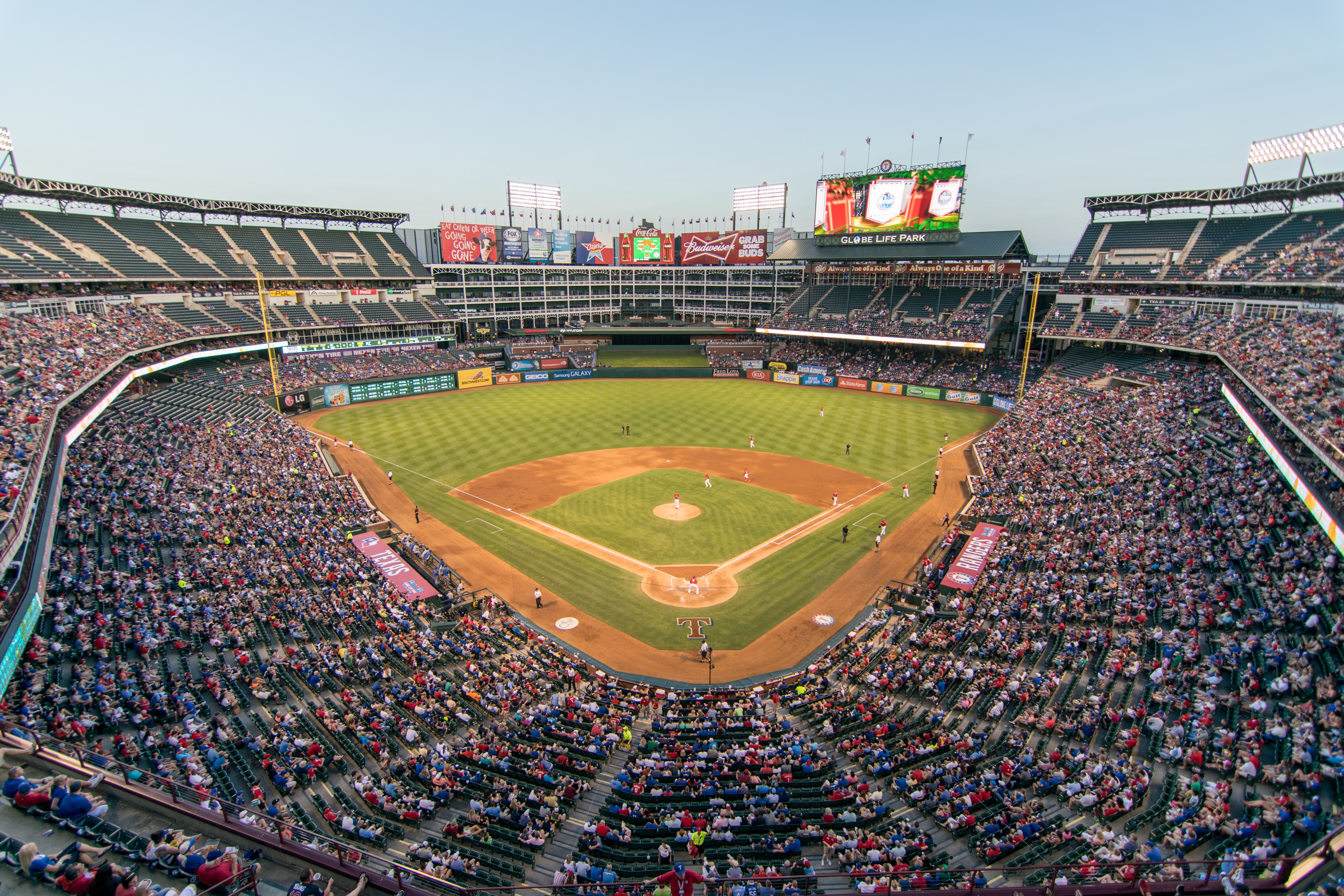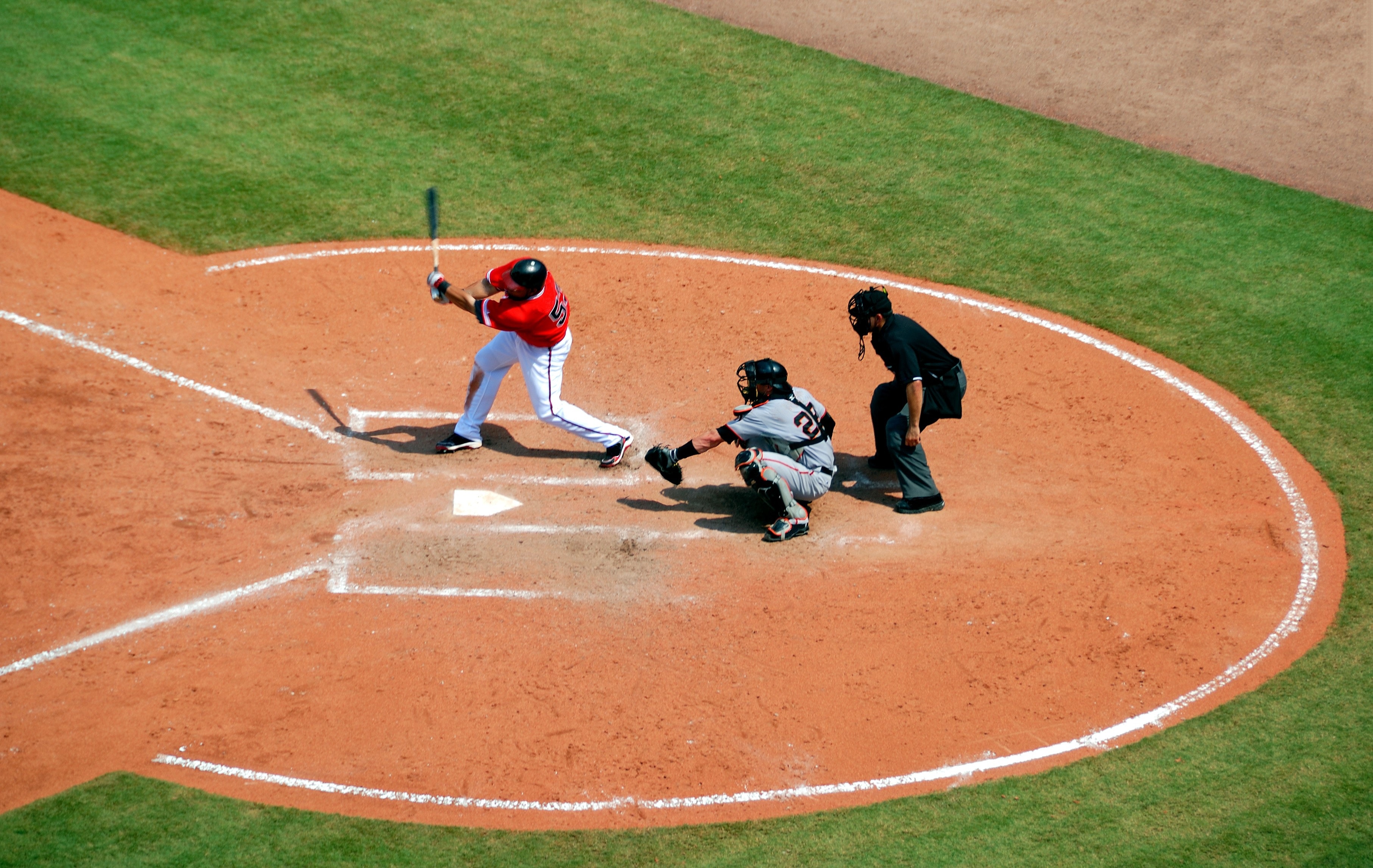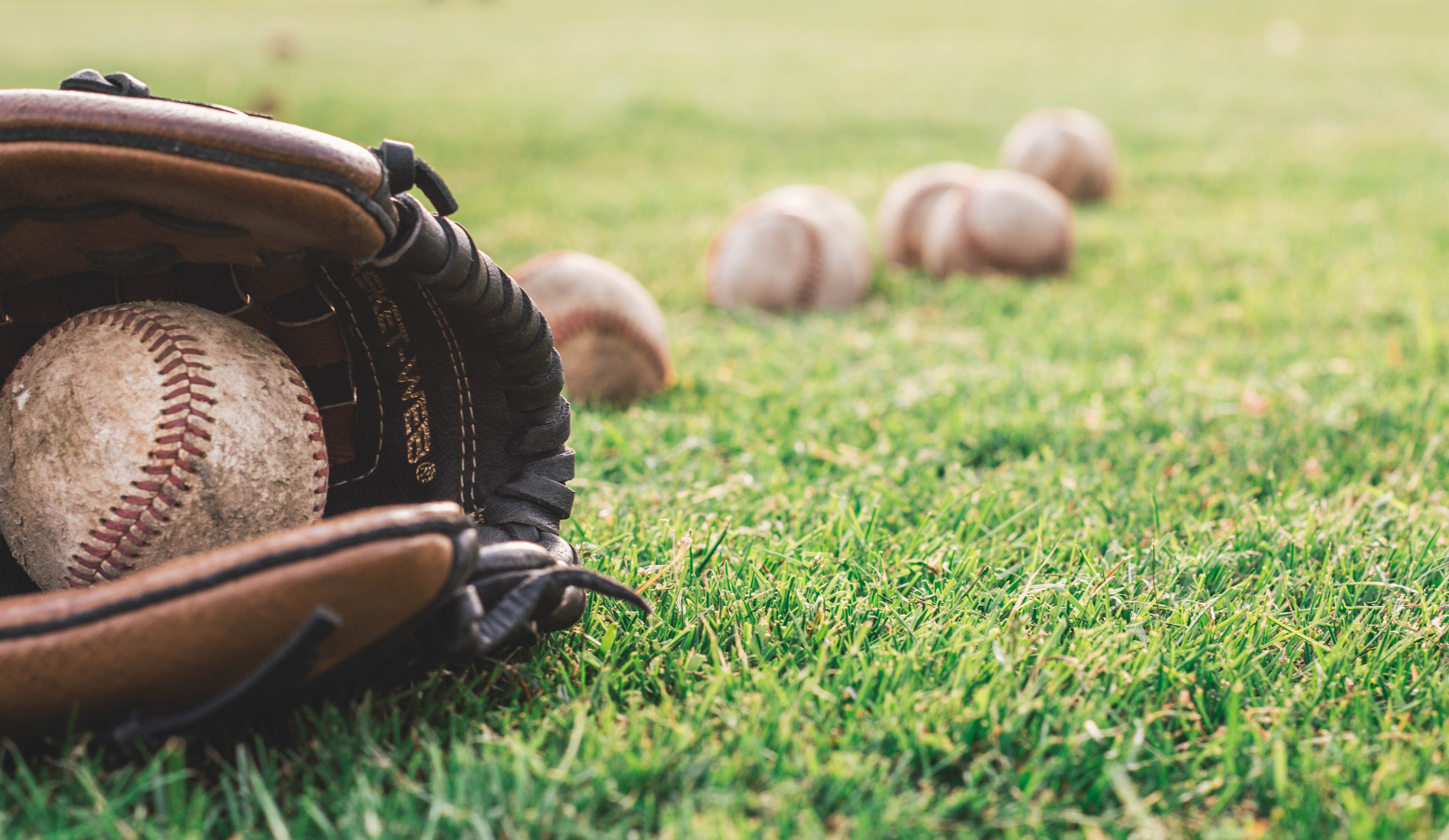America's favorite pastime has been around since the 1800s, but that doesn't necessarily mean you know how to play. Luckily, the basic rules are pretty simple to follow. Whether you're looking for a fun way to get some exercise and learn a new sport, or help your kids understand the game, we've got an easy guide on how to play baseball coming right up.
The Field

A baseball field is also called a baseball diamond. The circle at the bottom includes the home plate, which is where players bat. The circle in the middle is the pitcher's mound, where the ball is thrown from. First base is at the right of the field, second base is at the top of the field, and third base is at the left of the field. When a batter successfully hits the ball, they begin to run around the bases counterclockwise.
The dirt arc you see in the picture above is called the infield, and encompasses the 3 bases and home plate. The grass on the outer edges is called the outfield.
Players and coaches not on the field sit in the dugout. When pitchers aren't playing, they move to the bullpen.
Innings
Most baseball games have 9 innings. Each team must try to score runs, where they start from home plate and make it around all 3 bases before returning. Once a player has returned to the home plate, they score a point for their team.
In baseball, one team is up to bat while the other stays in the field and tries to get the batting team out. When the batting team gets 3 outs, the teams switch places and the team in the field goes up to bat. Once each team has gotten 3 outs, the inning is over.
If both teams have the same amount of points at the end of the 9 innings, they continue to play innings until one wins.
Player Positions
A baseball team is made up of 9 positions. Each position has a specific role.
Infield

Left to right: the batter, catcher, and umpire
The batter is the player currently up to bat. Only one player can bat at a time, and the order is decided before the game begins. If you strike out, you return to the rest of your team in the dugout and let the next person try.
The pitcher stands on the pitcher's mound and throws, or pitches, the ball to the other team. Their job is to pitch the ball into the strike zone. If the batter swings at the ball and misses, it's automatically a strike, and 3 strikes makes 1 out. For this reason, baseball coaches often tell their players not to swing unless they're sure they can hit the ball.
The catcher stays behind the batter. Their job is to tell the pitcher what to throw using hand signals, and catch any pitches that the batter doesn't hit. The catcher and pitcher are on the same team.
And while not a player, the umpire is behind the catcher and watches all the players to make sure they're following the rules.
There are also 4 infielders. The first 3 guard the bases and are called the first, second, and third basemen depending on which base they are on.
The fourth infielder is called a shortstop and stands between second and third base. This is because most baseball players are right-handed and tend to hit ground balls toward the left of the field. If a left-handed player comes up to bat, the basemen and shortstop will move to the right.
Outfield
The remaining players stay in the outfield—in left field, center field, and right field. Their job is to pick up farther balls and throw them to their teammates in the infield. Because they're farther from the action, it can be easy to get distracted by other things. But keep your eyes on the ball anyway—if you catch a pop fly, you can get someone out!
Play Terms
Baseball has a lot of lingo, especially if you're not familiar with the sport. Here are some of the most common terms for hits.
A ground ball or grounder is a ball hit low to the ground. Players in the infield usually retrieve these. The opposite of a ground ball is a pop fly, a ball that goes high in the air. While a pop fly gives you more time to run to a base, they can also be caught in midair for an out. There is also a line drive, a ball hit in a straight line that usually results in a base hit.
A bunt is when the batter holds the bat out horizontally to hit the ball instead of swinging. These balls don't travel far, so bunting is usually used to help advance runners already on the bases rather than getting to a base yourself.
Last but not least, hitting the ball past the outfield is called a home run. A home run means you can take a victory lap around all 3 bases. If you have teammates on the other bases when you hit the home run, they also score runs.
Defense
Each player that makes it around all 3 bases and back to home plate scores a run. However, the other team will be trying to get you out at the same time. Outs can be made by tagging a player not on a base with the ball, catching a fly ball or line drive in midair, or a force play, where you get the ball to the first baseman before the player makes it to the base.
Another example of an out: Say you hit the ball into the outfield, then a player from the other team picks it up. If they throw it to second or third base, the baseman must tag you before you reach the base to get you out.
Base-Running/Offense

As soon as you hit the ball, run as fast as you can to first base. When your teammate comes up to bat, watch for them to hit the ball and run quickly to second base. Continue to run around the bases until you make it back to home plate. If you run too early, the other team can get you out, so be careful!
If the other team is fast, they may be able to get multiple players out in the same play. This is called a double play. As long as you're standing on a base, though, you are safe. But as soon as you're not touching it, the other team can get you out.
You can also go back to the base you were on if you don't think you can make it to the next. However, you can't have 2 people on the same base. If your teammate is coming, you have to run for it anyway. This is another example of a force play—you're forced to run to the next base. Put on those cleats!
Other Guides
To delve deeper into improving your play, check out How to Become a Better Outfielder and How to Become a Better Infielder. Want to improve your throwing? Read How to Build Arm Strength & Throwing Velocity in Baseball for some drills to increase your speed.
While the basic rules are simple, baseball is actually a very complicated sport with a lot of technicalities. If you plan to play in a more serious league, don't be afraid to ask other players or coaches about the nuances.
Think you know how to play baseball now? Grab your bat and play ball!



